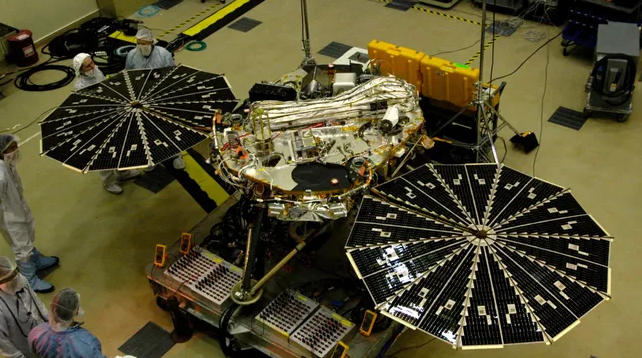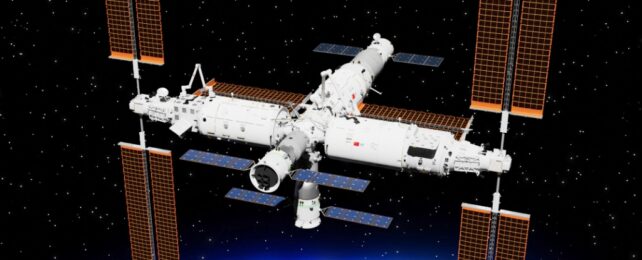Swabs from China's Tiangong space station reveal traces of a bacterium unseen on Earth, with characteristics that may help it function under stressful environmental conditions hundreds of kilometers above the planet's surface.
Naming their discovery after the station, researchers from the Shenzhou Space Biotechnology Group and the Beijing Institute of Spacecraft System Engineering say the study of Niallia tiangongensis and similar species could be "essential" in protecting astronaut health and spacecraft functionality over long missions.
The swabs were taken from a cabin on board the space station in May 2023 by the Shenzhou-15 crew as part of one of two surveys by the China Space Station Habitation Area Microbiome Programme.
Follow-up studies have traced the growth of microbes that inhabit the space station environment, revealing a microbiome that differs in both composition and function from the one found on the International Space Station.
The new species appears to be a close cousin to a known strain called Niallia circulans – a rod-shaped, soil-dwelling bacterium that just a few years ago was reallocated to a new genus classification, having previously been regarded as a pathogenic form of Bacillus.
Like species of Bacillus, N. circulans and its space-faring relatives pack their essential chemistry into hardy spores to survive times of great stress. It's not clear whether N. tiangongensis evolved on the station or arrived in spore form with at least a few of its distinguishing features in place.
According to the recently published analysis on its genes and functions, the new species has a unique ability to break down gelatin as a source of nitrogen and carbon, a knack that comes in handy when it needs to construct a protective coat of biofilm to bunker beneath when conditions get a little rough.
On the other hand, it seems to have lost the ability to utilize other energy-packed substances its cousins happily chow down on.
Not only does this reveal Niallia can be a diverse bunch of microorganisms, it demonstrates how readily some varieties of bacterium can make themselves right at home in our orbiting habitats.
There's also not a great deal we can do about it. An examination of the 'clean rooms' NASA used to prepare the Mars Phoenix mission revealed dozens of microbe strains belonging to 26 novel species.

A recent study of these novel bacteria found their amazing ability to survive conditions we would assume to make the environment sterile came down to genes linked to DNA repair and resistance to levels of substances other microbes would find toxic.
Knowing thy enemy is clearly a significant step towards dealing with them. If we can't prevent their existence or their ability to adapt, it is vital we can predict how microbes will adjust to living in space.
It's yet to be determined whether Niallia tiangongensis poses any threat to the health of Tiangong's astronauts, but given its cousin's ability to cause sepsis in immunocompromised patients and its newfound ability to break down gelatin, the potential for health problems from this and other space microbes is a serious issue.
With eyes on launching missions to the Moon and beyond, it's never been more important to know how the tiny passengers sharing our space may be suited to a life far from home.
This research was published in the International Journal of Systematic and Evolutionary Microbiology.
